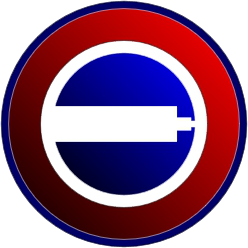AM-TECH's Eight Elements of Effective Preventative Maintenance
- Get motivated for the tasks at hand.
- Preventative maintenance should consume MORE of your time.
- Plan and schedule the work that needs to be done
- Make sure everyone has the right tools for their job
- Everyone can take on a little more responsibility.
- Good preventative maintenance delivers great production
- Get everyones input and involvement for creative solutions
- "DO IT RIGHT!"
Cleaning Photopolymer Plates
The following procedure is intended to provide the modern Flexographer with the tools to safely and effectively remove water based inks from the surface of photopolymer printing plates. This procedure is meant to enhance personnel safety, plate longevity and conservation of cleaning chemicals. There are many methods that Flexographers employ when cleaning plates. Manual scrubbing, manual hosing, tank bathing automated tank spraying etc... Whatever your current procedure, the following steps and information can be integrated into your process to augment and improve your results.
Step 1: Don't Wait to Clean!
Details: Once you have finished a job and the press stops running, the ink covering your plates immediately begins to dry. The faster you move the plates from the press, to your cleaning area the better. This is "The Golden Rule" of plate cleaning. The success or failure of each subsequent step in the cleaning process correlates directly to how long you wait to clean after the presses stop.
Step 2: Water Rinse
Details: Plates should be immediately rinsed with clean water. This will begin the re-wetting process, wash away large amounts of surface ink and allow for less cleaning chemical to be used.
Step 3: Chemical Cleaning
Details: Choose an appropriate Non-corrosive photopolymer plate cleaner. Am-Tech's D-ZOLV, 209 Flexo Wash are our recommendations. Follow the dilution instructions for "Light Cleaning" applications. The cleaner can be sprayed / wiped on manually or automatically. Cover the plate generously with the cleaning solution. A nylon soft bristled brush or clean lint free cloth should be used to agitate the cleaner and loosen dried ink. Continue applying fresh cleaner to the plate during the scrubbing process. Periodically rinse with clean water to determine general cleanliness of the plate. (Note: When brushes, rags, spray heads or any other mechanical means of application and cleaning are used, apply light pressure. Plate degradation is accelerated by over use of pressure during cleaning.)
Step 4: Final Rinse
Details: After all of the ink is removed from the plate, rinse the plate thoroughly with cold water. The point of this process is twofold. First, any remaining ink or resins will be removed. Second, any remaining cleaning chemical will be removed. (Note: Residual cleaning chemical not properly rinsed away can accelerate plate degradation. )
Step 5: Drying
Details: Plates must be allowed to dry thoroughly after cleaning. After drying, plates must then be stored properly. They can be hung, placed in envelopes, drawers or wrapped (to protect against light exposure) with the edges sealed.
Stop!
- Cheaply constructed brushes: If the bristles fall or break off of the brush, they can stick to the plate surface and affect ink transfer.
- Metal bristles - STAY AWAY! This will scratch, gouge and tear your plates.
- Rags and Shop Towels Just like cheap nylon brushes, rough rags and shop towels will "shed" lint and other materials onto the plate surface.
What should I Use to Scrub my Photopolymer Plates?
Always use a soft brush with very fine bristles to scrub your plates. WELL MADE nylon brushes are best.
Chemicals to Avoid
There are thousands of chemicals that can cause damage to photopolymer printing plates. The chemicals listed below are extremely detrimental to photopolymer and are often found in Flexographic Printing facilities. Be aware! If these chemicals are being used anywhere in your plant, make sure they do not come into contact with your plates.
- Acetone,
- Ethyl Acetate,
- Methyl Ethyl Ketone (MEK),
- Naphtha,
- Isopropyl Alcohol,
- Mineral Spirits,
- Propylene Glycol, and
- Rubbing Alcohol.
Storage
Plates need to be brought back from the press floor as soon as possible so they can be cleaned and stored.
Keeping Photopolymer Plates Safe
Prevent exposure of plates to light. Exposure to light sources rich in ultraviolet light (such as sunlight or high pressure mercury vapor lights) will cause a loss of physical properties. Protect the plates from light by storing them in envelopes or film drawers.
Do not stack one plate directly on top of another. Use separator sheets between sheets and do not stack over 6" high.
Temperature in the storage area should not exceed 100°F as high temperatures can cause the plates to become tacky.
Storing plates on cylinders or in a curved position increases surface tension which makes plates more susceptible to damage.
